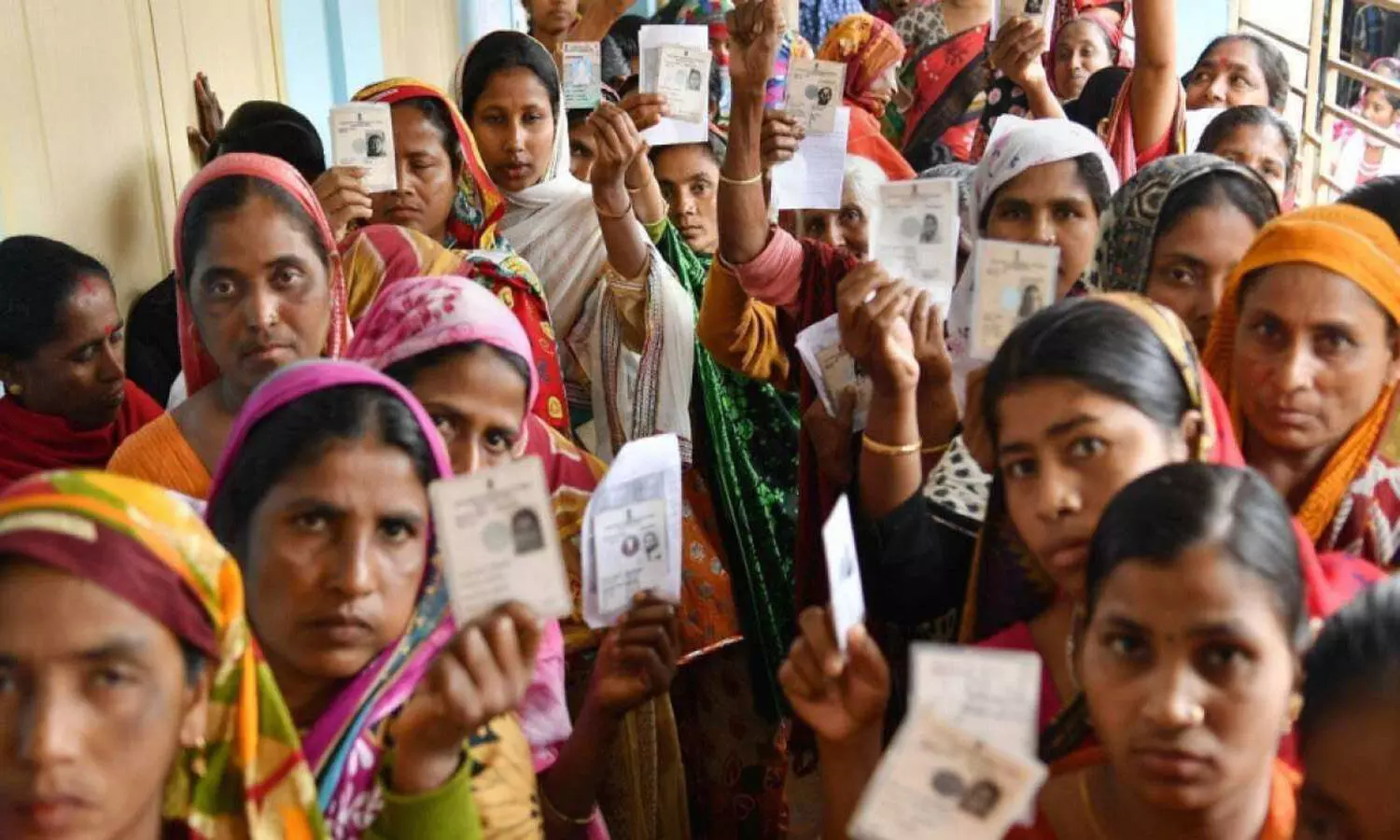TRENDING TAGS :
Women voters are going to play an important role in Uttar Pradesh Assembly elections
Assembly elections are now happening in the state, and the results will be revealed on March 10. Women make up around 50% of the population of Uttar Pradesh.
Uttar Pradesh is regarded as the political heartland of India. The electoral changes occurring in this state have an effect on the country's politics as a whole. Uttar Pradesh is now on the approach of forming a new Assembly. Assembly elections are now happening in the state, and the results will be revealed on March 10. Women make up around 50% of the population of Uttar Pradesh.
If we consider our nation, if we consider Uttar Pradesh, the state's prosperity and diverse development are heavily based on women's power. That is why political parties make a concerted effort to recruit female voters during elections. In light of the current elections, a historical analysis of women's representation in the Uttar Pradesh Assembly reveals that from the first assembly to the present, the state's women's representation has never exceeded 10%. । In 2017, 40 of the assembly's 403 members were women, up from 35 in 2012. When we analyze this situation, it becomes evident that although the graph of female involvement has been continuously growing, the concerning issue is how slowly it has been increasing. At the same time, it is very difficult for a woman from a typical background to run for office.
In this context, it is entirely reasonable to assert that political parties frequently field women from strong political backgrounds in the east in the electoral arena, as a result of which the average woman's participation in politics is frequently concluded by voting for the political party determined by the family. It progresses. Because electoral strategy determines ticket allocation based on a candidate's capacity to win and caste dynamics, concerns such as gender equality are disregarded.
At the present, it cannot be denied that several initiatives have been made at the national and state levels to promote women's engagement in politics. For instance, our Constitution guarantees the right to vote to all persons attaining the age of eighteen years under adult suffrage. Additionally, women have been granted reservations in Panchayati raj institutions; similarly, women's problems like safety, education, and health are becoming political topics.
The Election Commission of India has established 100% women-managed voting booths in Uttar Pradesh's forthcoming 17th Assembly, placing a premium on gender equality. It is required in all five states, including Uttar Pradesh, where elections are now taking place. Women will be responsible for all security and policing at such voting stations. This is unquestionably a significant step toward women's empowerment. From a political party standpoint, about 69 million of Uttar Pradesh's 150 million voters are women. If we look at the 2017 Uttar Pradesh Assembly elections and the recent West Bengal Assembly elections, as well as the 2014 Lok Sabha elections, it is apparent that women voters influenced election outcomes in unprecedented ways.
That is why the BJP, the Congress Party, and the Samajwadi Party are attempting to include all women in the next elections in Uttar Pradesh. For example, the governing BJP is continuously attempting to persuade women that initiatives like Mission Shakti, Ujjwala Yojana, and Beti Bachao, Beti Padhao have prioritized women's safety and dignity in the state. Similarly, if elected to power, the Samajwadi Party has promised 18,000 yearly pensions to destitute women.



